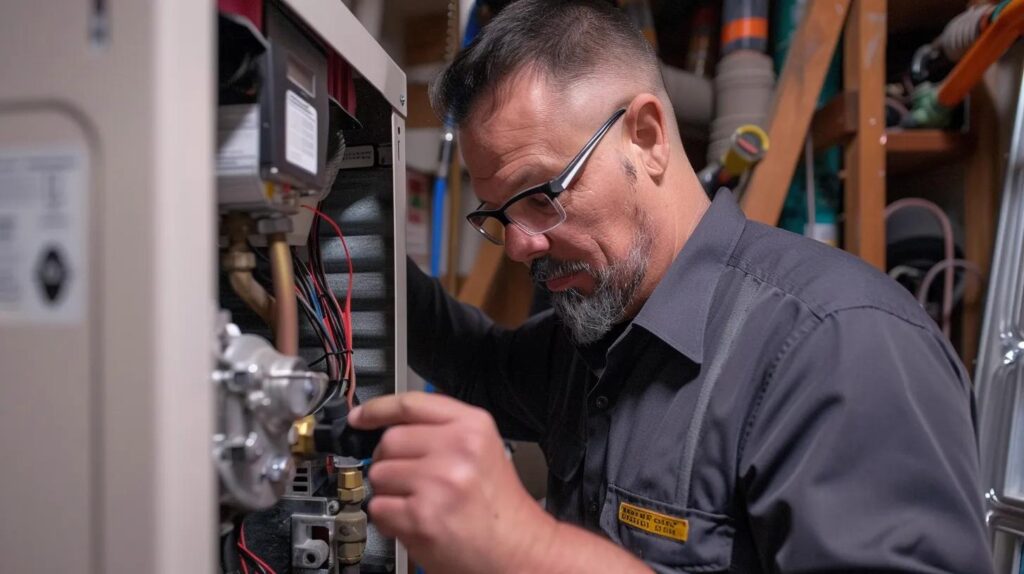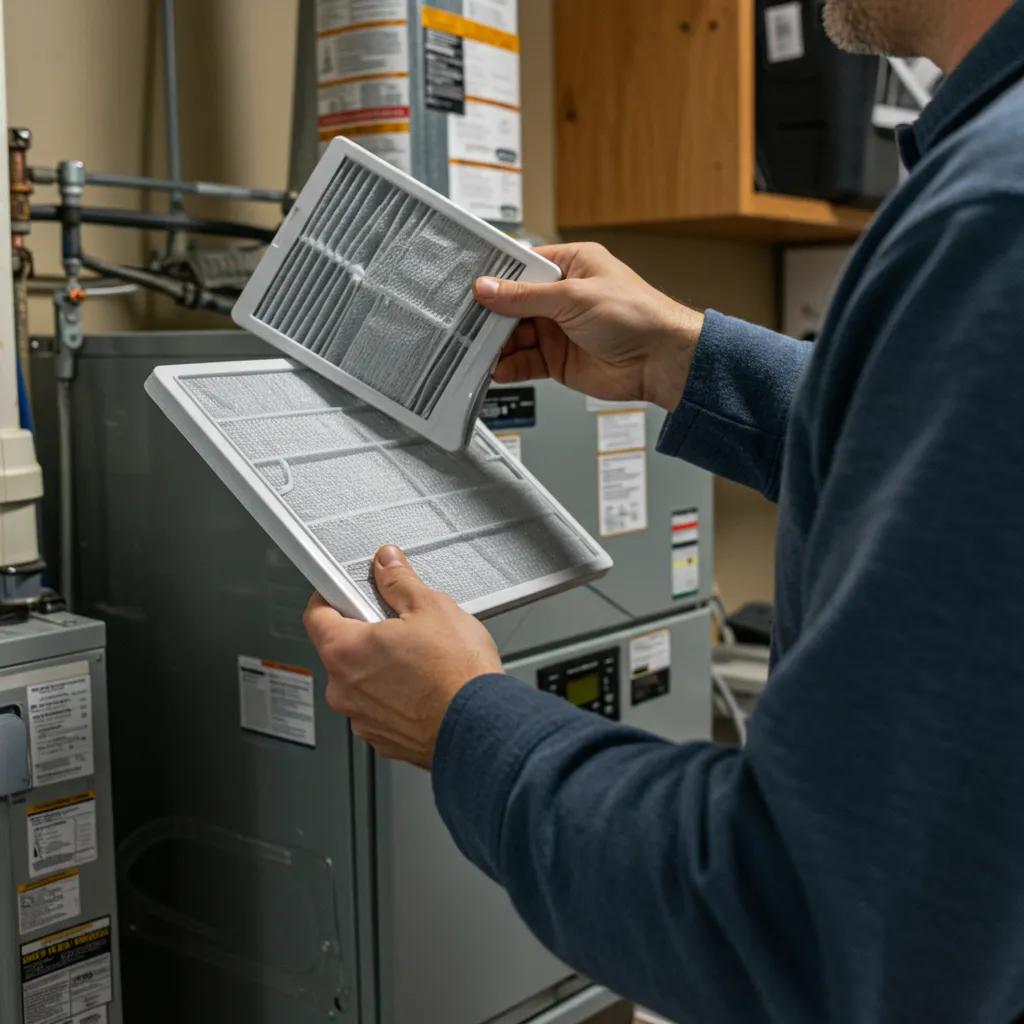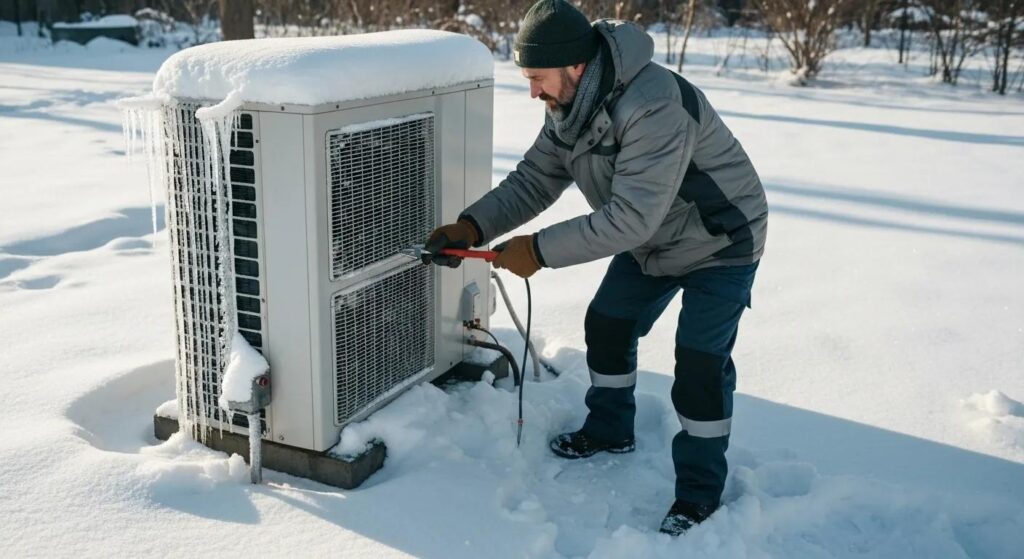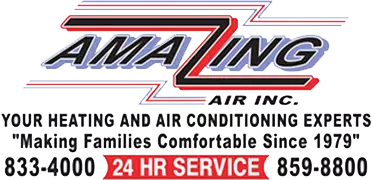
Get Your HVAC Ready for Winter: Essential Maintenance and Energy-Saving Tips
Don’t let a sudden furnace failure on the first cold snap leave your family shivering or your business in a bind. Getting your HVAC ready for winter is key to ensuring comfort, cutting energy bills, and maintaining healthy indoor air quality, all while preventing unexpected breakdowns. This guide will walk you through why seasonal tune-ups are so important, how to winterize your furnace and heat pump step-by-step, broader strategies for system efficiency, when to call in the pros, and specific advice for commercial systems. By following these best practices for winter HVAC prep, Fox Valley homeowners and business owners can count on reliability, safety, and cost savings through expert maintenance.
Why Is Getting Your HVAC Ready for Winter So Important?
Proper winter HVAC preparation is crucial for reliable heating performance, preventing mechanical failures when your system is under the most strain. Regular tune-ups involve cleaning filters, inspecting critical components, and calibrating controls, which helps avoid sudden breakdowns when temperatures plummet. For instance, a neglected blower motor bearing could seize up in mid-January, leading to heating maintenance and a very uncomfortable situation.
A thorough inspection also optimizes system efficiency by identifying airflow restrictions and refrigerant issues before they become major problems. Keeping your vents clear and your thermostat calibrated ensures consistent warmth, reduces energy consumption, and extends the lifespan of your equipment.
How Does Winter HVAC Preparation Prevent Costly Breakdowns?
Preparing your HVAC for winter helps prevent system failure by addressing wear and tear before your system has to work its hardest. Inspecting belts, motors, and electrical connections reduces the risk of sudden shutdowns, saving you from emergency call-outs and costly downtime. Homeowners who schedule a fall HVAC maintenance plan typically experience about 50 percent fewer heating repairs compared to those who put off maintenance.
Common issues like frozen condensate lines, cracked heat exchangers, and worn blower bearings can be identified and fixed in advance, preserving your comfort and preventing expensive component replacements mid-season.
What Are the Energy Efficiency Benefits of Winter HVAC Maintenance?
Regular winter HVAC maintenance boosts energy efficiency by restoring optimal airflow, fine-tuning thermostat differentials, and ensuring the correct refrigerant charge. These actions can significantly reduce energy consumption and lower your heating bills by up to 15 percent during the coldest months.
Quantifying the Energy Benefits and Optimisation of HVAC Maintenance
Quantifying the energy benefits of HVAC maintenance training and preventive maintenance. This paper addresses the energy saving challenge for air-cooled central cooling plant systems and the minimisation of energy consumption, along with predicting the system’s optimal set-points. By synthesising previous research, four contextual suggestions form the building blocks for the development of an integrated optimisation conceptual framework for this study. Conjoint analysis would offer greater advantage over the Likert-scale method, as it could evaluate HVAC equipment conditions and document typical maintenance requirements.
Quantifying the energy benefits of HVAC maintenance training and preventive maintenance, 1999
| Benefit | Mechanism | Typical Saving |
|---|---|---|
| Reduced blower resistance | Clean filters and ducts | 5 – 15 percent |
| Accurate temperature control | Calibrated thermostats and sensors | 2 – 3 percent |
| Optimised combustion | Inspected burners and heat exchanger | 3 – 5 percent |
Not only does lower your operating costs, but it also reduces your environmental impact by cutting down on carbon emissions when you need heating the most.
How Does Proper HVAC Winterisation Improve Indoor Air Quality and Safety?
Comprehensive winterisation improves indoor by replacing dirty filters, cleaning coils, and disinfecting drain pans, which helps prevent the spread of dust, allergens, and microbial growth. Up to 40 percent of airborne particulates can come from neglected HVAC components, so a fall tune-up directly contributes to a healthier indoor environment.
Safety checks for gas leaks and carbon monoxide detectors identify potential hazards before they can endanger occupants. Ensuring your duct joints are sealed and your gas valves are properly adjusted protects against harmful emissions and provides peace of mind throughout the season.
What Are the Key Steps to Prepare Your Furnace for Winter?
A furnace tune-up checklist helps eliminate inefficiencies and ensures safety by inspecting core components, replacing consumables, and verifying controls. Performing these tasks annually helps prevent flame issues, maintains consistent heat output, and minimizes unexpected repair needs.
How Do You Check and Replace Furnace Air Filters Before Winter?

Replacing your air filter ensures unobstructed airflow, which improves heating performance and reduces energy use. To do this, locate the filter slot, note the filter size, slide out the old filter, and install a new one rated for capturing fine particles during winter.
- Check your filter monthly for dust buildup
- Replace filters every 1–3 months, or sooner if you have dusty conditions
- Use MERV-8 or higher rated filters for optimal allergen removal
Consistent filter maintenance is fundamental for efficient furnace maintenance operation and complements subsequent safety inspections.
Why Is Inspecting Burners and the Heat Exchanger Important?
Inspecting the burners and heat exchanger confirms complete combustion and checks for structural integrity. Technicians will assess flame patterns, look for any cracks in the heat exchanger, and clean burner ports to ensure even heating.
- Clean burner assemblies to remove soot buildup
- Examine heat-exchanger surfaces for hairline fractures
- Test venting and exhaust pathways
A sound heat exchanger prevents dangerous carbon monoxide leaks, while balanced burners maintain a stable flame and avoid cold spots in your home.
How Should You Test and Adjust Your Thermostat for Winter Efficiency?
Testing and programming your thermostat ensures precise temperature control, which helps reduce energy spikes. Start by comparing the setpoint readings to the actual room temperature, then adjust the differential settings for tighter comfort bands.
- Calibrate digital thermostats using a room thermometer
- Program temperature setbacks of 3–5 °C during unoccupied hours
- Utilize smart thermostat features for adaptive scheduling
Accurate thermostat settings lead to more consistent comfort and lower heating costs throughout the cold season.
What Safety Checks Are Essential for Furnace Winterisation?
Safety checks confirm that your gas lines, ignition components, and detectors are functioning correctly, protecting occupants from leaks or hazardous combustion by-products. A technician will test your carbon monoxide alarms, inspect gas connectors, and verify flame-sensing sensors.
| Checkpoint | Attribute | Outcome |
|---|---|---|
| Gas connector integrity | Tightness | No detectable leaks |
| Ignition electrode | Spark strength | Reliable burner ignition |
| CO detector functionality | Alarm signal | Certainty of early leak warning |
Completing these inspections ensures a safe start to every heating cycle and prepares your electric furnace inspection for reliable winter performance.
How Do You Prepare Your Heat Pump for Winter?

Winterizing your heat pump helps prevent ice buildup and maintains its heating capacity even in sub-zero temperatures. Clearing away debris, verifying defrost cycles, and insulating refrigerant lines keeps your outdoor unit operating at peak efficiency.
What Maintenance Does the Outdoor Heat Pump Unit Require?
Outdoor unit maintenance involves removing leaves, snow, and ice that could obstruct airflow. Clearing a one-meter perimeter around the unit, using a breathable cover during heavy snowfall, and lubricating exposed moving parts helps maintain reliability.
- Remove debris weekly during the fall leaf season
- Clear snow drifts immediately after snowfall
- Inspect the protective housing for any damage
These tasks are essential for maintaining airflow integrity and preventing strain on the compressor when temperatures drop significantly.
How Do You Check Refrigerant Levels and Defrost Cycles?
Verifying refrigerant levels and defrost functionality ensures uninterrupted heating. A technician will connect gauges to the suction and discharge lines, adjust the charge according to manufacturer specifications, and observe the defrost cycles to ensure they are timed and run for the correct duration.
- Monitor frost accumulation on the coils
- Confirm defrost sensor activation when temperatures are at or below 2 °C
- Adjust defrost timers if ice continues to build up beyond recommended intervals
An accurate refrigerant charge and proper defrost control are vital for continuous heating performance and protecting the compressor’s health.
What Are the Best Practices for Heat Pump Winter Care in Cold Climates?
In the Fox Valley’s chilly climate, advanced users often employ auxiliary electric heat or hybrid systems to supplement heat pump output when outdoor temperatures fall below -10 °C. Elevating outdoor unit platforms prevents them from being buried in snow, while pipe insulation minimizes heat loss along refrigerant lines.
Using smart controls that automatically switch between heating modes optimizes overall system efficiency and maintains indoor comfort without excessive energy consumption.
What General HVAC Winterisation Tips Help Maximise System Efficiency?
Maximizing system efficiency goes beyond individual equipment to include improvements to your building’s envelope, ductwork integrity, and smart controls. A comprehensive approach reduces the workload on your heating components and delivers consistent warmth throughout your home or business.
How Can Draft Sealing and Insulation Improve Heating Efficiency?
Improving draft sealing and insulation creates a tighter building envelope, which reduces heat loss and minimizes system runtime. Applying weatherstripping to doors and windows, sealing attic bypasses, and adding insulation in your loft helps reduce thermal bridging.
Optimisation of HVAC Systems for Energy-Efficient Building Operations
Review of HVAC System Optimisation Towards Energy-Efficient Building Operation. This paper reviews optimisation work on HVAC systems based on three main approaches: optimisation of HVAC operational parameters, optimisation of HVAC systems, and optimisation of HVAC control.
Review on HVAC System Optimization Towards Energy Saving Building Operation., H Selamat, 2020
| Improvement | Impact | Typical Energy Reduction |
|---|---|---|
| Window weatherstripping | Prevents air leaks | 5 – 10 percent |
| Loft insulation upgrade | Improves thermal retention | 10 – 15 percent |
| Pipe insulation | Reduces heat loss in piping | 2 – 4 percent |
These measures complement HVAC tune-ups by lowering peak demand and extending the lifespan of your equipment.
Why Is Ductwork Inspection and Sealing Important Before Winter?
Leaky or poorly connected ducts can allow up to 20 percent of heated air to escape before it reaches your living spaces. Sealing seams with mastic, insulating ducts in unheated areas, and balancing airflow can significantly boost your effective heating capacity and reduce energy waste.
How Do Smart Thermostats Contribute to Winter Energy Savings?
Smart thermostats learn your occupancy patterns, automate temperature setbacks, and allow for remote adjustments, all of which help reduce energy use without sacrificing comfort. Integrating them with weather forecasts enables pre-heating before cold fronts arrive, optimizing runtime and avoiding high-demand cycles during peak grid usage.
When Should You Call Professionals for HVAC Winter Preparation?
While many maintenance tasks are suitable for capable homeowners, professional tune-ups are essential for detecting hidden faults, ensuring safety compliance, and maintaining warranty benefits. Scheduling seasonal service appointments provides comprehensive inspections and precise adjustments.
What Are the Benefits of Professional HVAC Winter Tune-Ups?
Professional winter services extend your system’s lifespan, enhance its reliability under load, and validate safety controls. Certified technicians use calibrated instruments to measure gas pressures, verify airflow, and test electrical integrity. As a result, you can enjoy consistent warmth, fewer emergency repairs, and optimized energy use through specialized adjustments.
How Does Amazing Air Inc. Provide Reliable Local HVAC Winter Services in Fox Valley?
Amazing Air Inc. combines local climate expertise with customized winterization protocols, ensuring your furnaces and heat pumps are ready for sub-zero temperatures. By focusing on energy-saving strategies, carbon monoxide safety checks, and prompt response times, our team delivers dependable service for homes and businesses throughout the Fox Valley region.
How Can Business Owners Prepare Commercial HVAC Systems for Winter?
Preparing commercial HVAC systems involves addressing their scale, regulatory compliance, and the need for uninterrupted operations. A proactive maintenance contract ensures annual inspections, priority scheduling, and detailed reports that support your business continuity planning.
HVAC Maintenance Management for Energy Efficiency in Commercial Buildings
Extending urban energy transitions to the mid-tier: Insights into energy efficiency from the management of HVAC maintenance in ‘mid-tier’ office buildings. The management of HVAC maintenance, focusing on issues pertaining to the workforce, building and systems, and maintenance strategies, is crucial for energy efficiency in commercial buildings.
Extending urban energy transitions to the mid-tier: Insights into energy efficiency from the management of HVAC maintenance in ‘mid-tier’office buildings, D Daly, 2023
What Are the Unique Challenges of Commercial HVAC Winterisation?
Commercial systems often include large , and multiple zones that require coordinated duct work. Maintaining consistent temperatures across the entire facility and meeting workplace safety regulations demands specialized diagnostic tools and scheduled load-bank testing.
How Do Commercial Maintenance Contracts Support Winter HVAC Readiness?
Maintenance contracts provide structured servicing intervals, clearly defined scopes of work, and emergency response guarantees. Regular filter replacements, coil cleanings, and control system audits help mitigate the risk of unplanned downtime and uphold indoor air quality standards for your staff and customers.
How Does Commercial HVAC Winter Prep Improve Indoor Air Quality and Safety?
Comprehensive winter care removes bacteria and particulate buildup from large ductwork systems, ensuring compliance with health codes. Gas-fired units undergo burner and vent inspections to prevent carbon monoxide infiltration, while freeze-stat verification safeguards against coil icing issues.
Conclusion
Preparing your HVAC system for winter guarantees dependable heating, enhanced energy efficiency, and better indoor air quality, ensuring your comfort and savings throughout the season. By implementing the maintenance strategies discussed, you can avert costly repairs and create a warm, safe environment for your family or business. Take action now to winterize your system and unlock its full potential for the cold months ahead. Explore our expert services to ensure your HVAC is ready for winter today.

